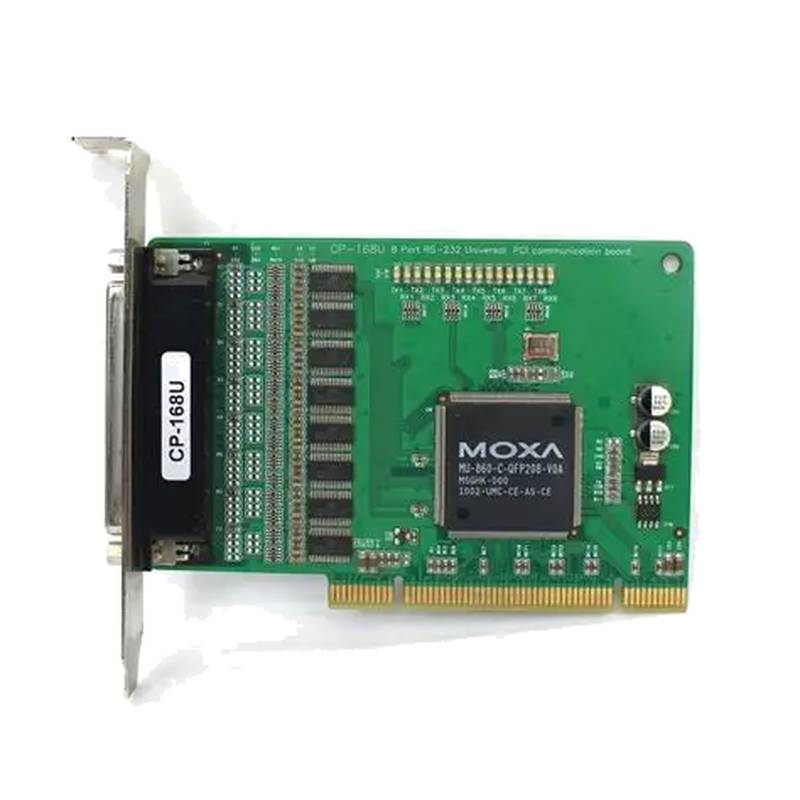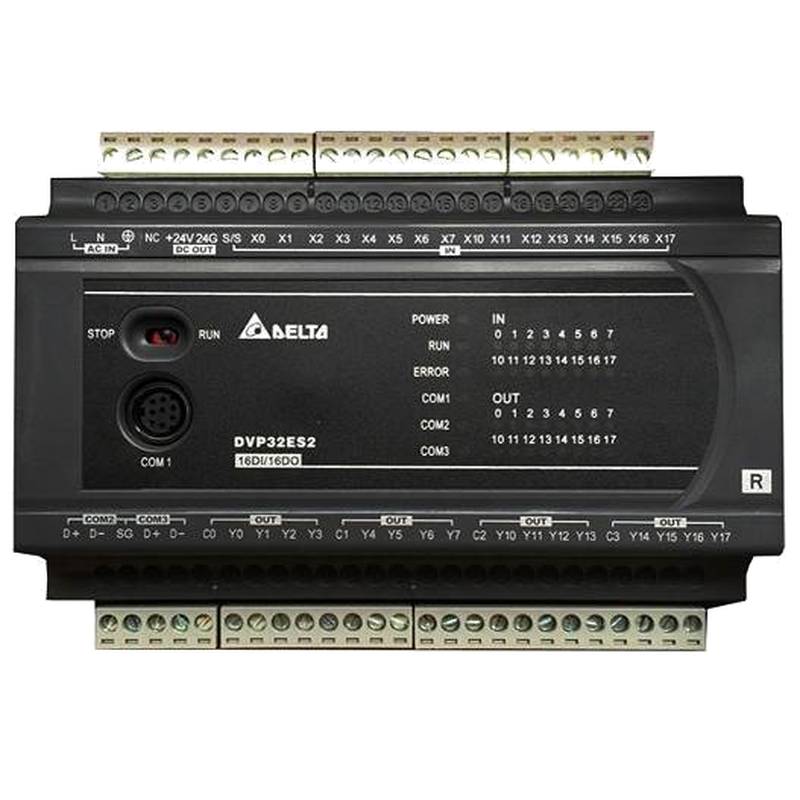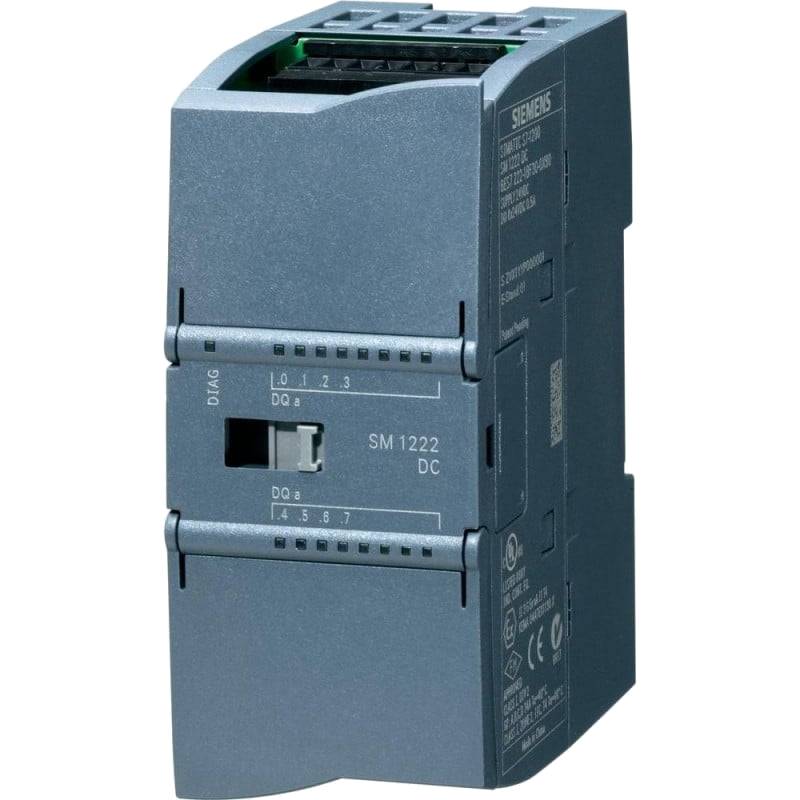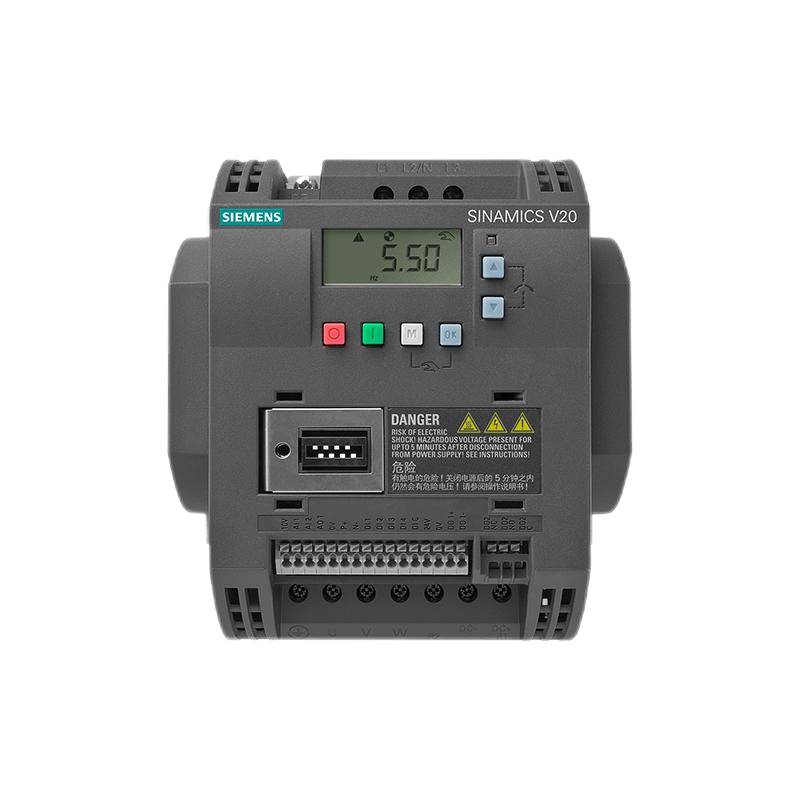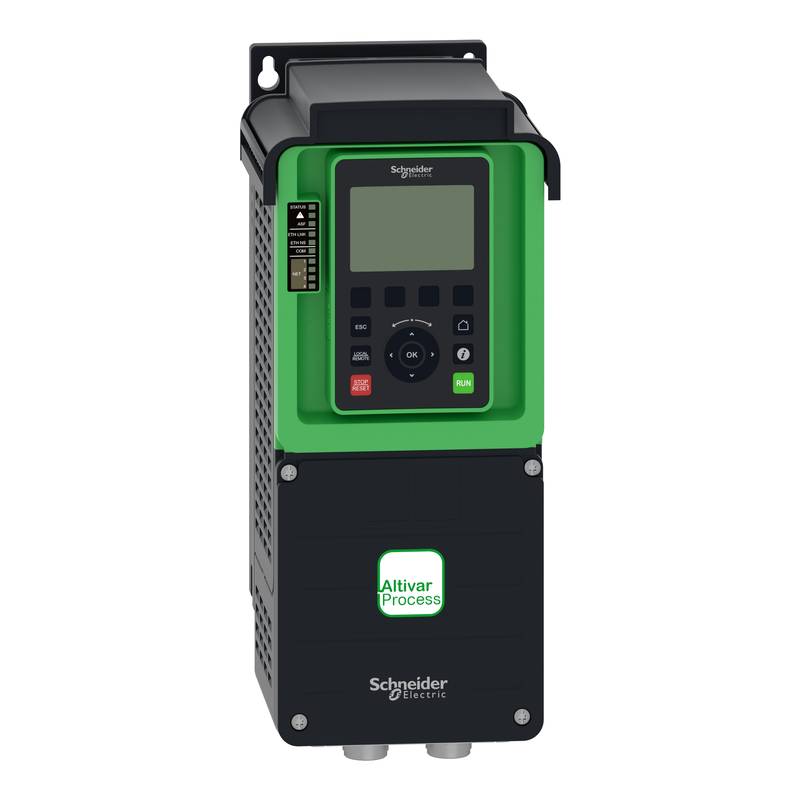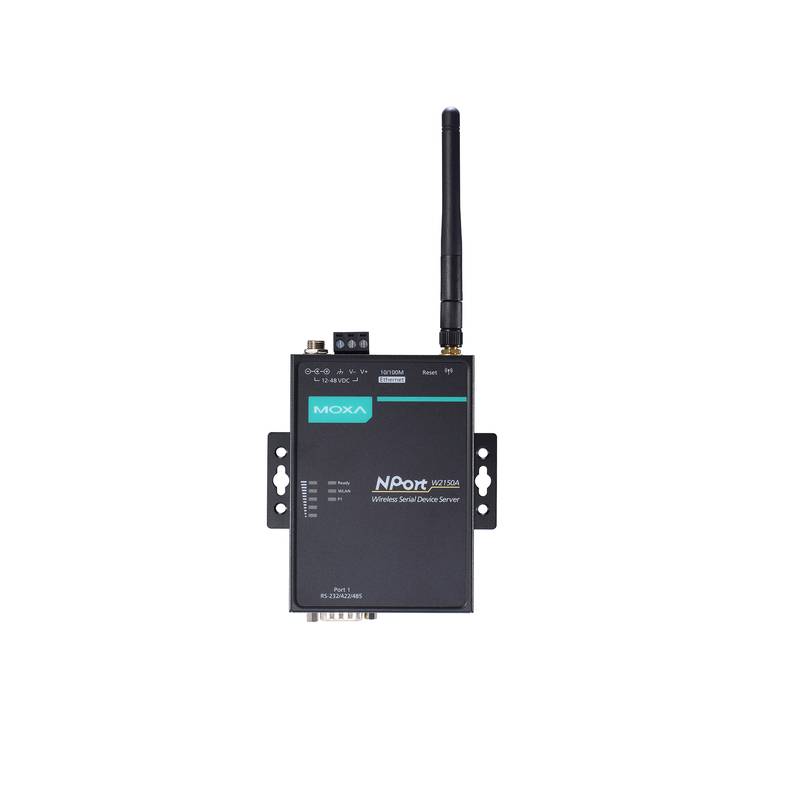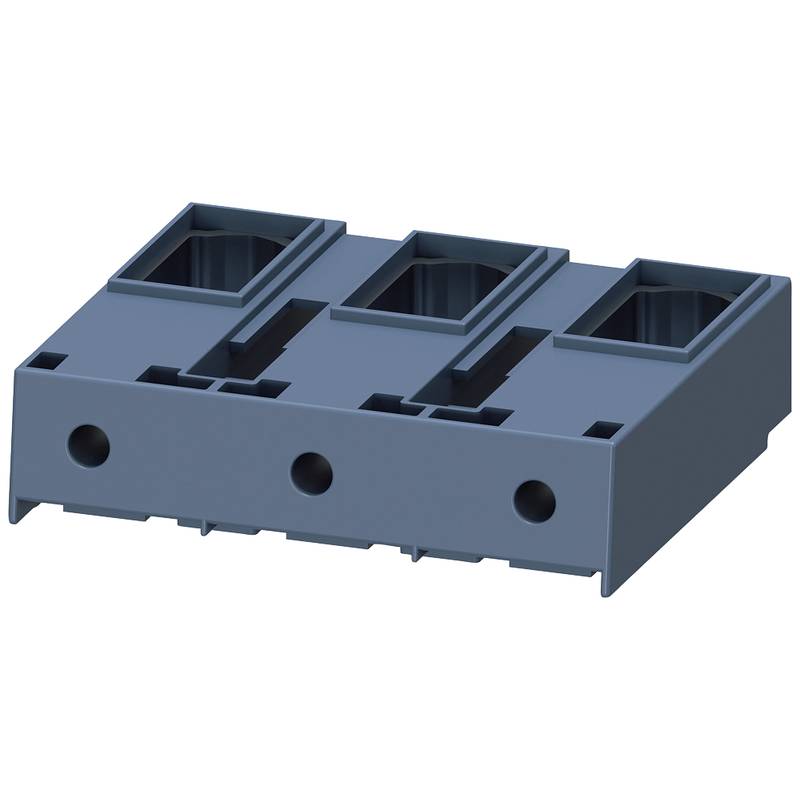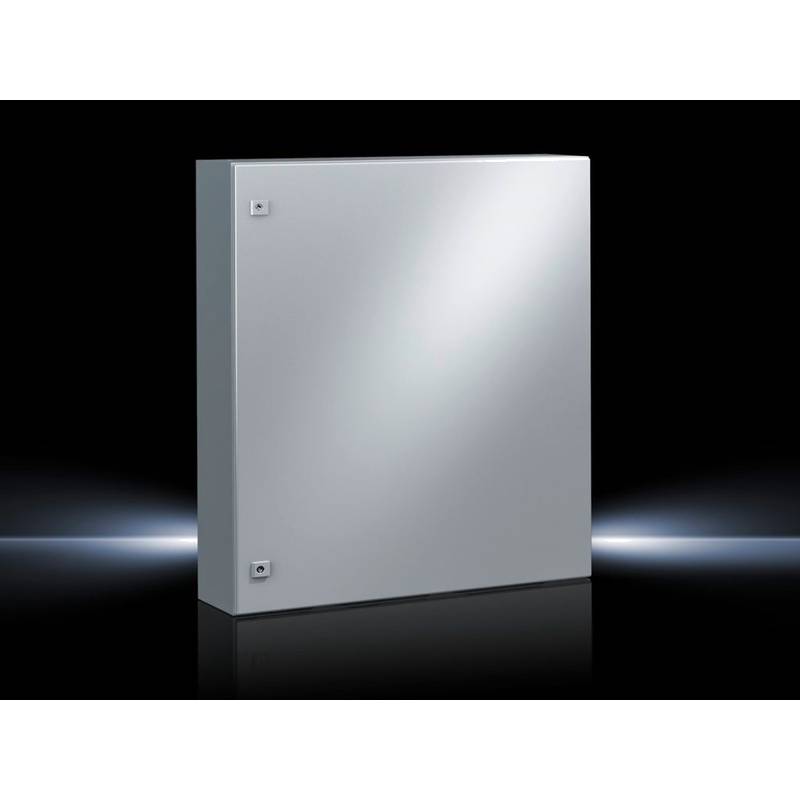
The SIMPHOENIX DX100-4T0370 inverter stands as a robust frequency drive solution engineered for the demanding operational requirements of heavy machinery. Boasting a powerful 37kW (50HP) output and a 400V class voltage, this VFD is designed to deliver precise motor control, enhanced energy efficiency, and superior reliability in harsh industrial environments. Its advanced control algorithms ensure smooth acceleration and deceleration, reduce mechanical stress on equipment, and optimize power consumption, making it an indispensable component for applications requiring variable speed operation.
Product Specifications
| Feature | Specification |
| :------------------- | :--------------------------------------------- |
| Model | SIMPHOENIX DX100-4T0370 |
| Rated Power | 37 kW (50 HP) |
| Input Voltage Class | 400V Class |
| Output Frequency | 0-600 Hz |
| Control Method | V/f, Sensorless Vector Control, Closed-Loop Vector |
| Protection Features | Overload, Overvoltage, Undervoltage, Overtemperature, Short Circuit, etc. |
| Communication | RS485 (Modbus RTU), Optional fieldbuses |
| Operating Temperature| -10°C to +40°C (derating above 40°C) |
| Enclosure | IP20 |
Core Features & Market Positioning
The SIMPHOENIX DX100-4T0370 differentiates itself through its advanced control capabilities, offering both sensorless vector control for applications requiring high torque at low speeds without encoder feedback, and closed-loop vector control for precise speed and torque regulation, even under fluctuating loads. This versatility positions it as a high-performance solution for critical machinery. Its robust design, incorporating comprehensive protection mechanisms against electrical faults and environmental factors, ensures extended operational life and minimized downtime in sectors like manufacturing, mining, and material handling, where equipment reliability is paramount. The integration of flexible communication protocols like RS485 (Modbus RTU) further enhances its appeal for integration into supervisory control and data acquisition (SCADA) systems and industrial automation networks, facilitating real-time monitoring and control.
Key Application Scenarios
This 37kW inverter is ideally suited for a wide array of heavy machinery applications where precise speed control and energy savings are crucial. Common use cases include controlling large industrial fans and pumps in HVAC and water treatment plants, managing the speed of conveyors and mixers in food processing and chemical industries, and driving heavy-duty hoists and cranes in construction and logistics. Its ability to handle high starting torques and maintain stable operation under dynamic load conditions makes it a prime choice for extruders, crushers, and various types of material handling equipment. The DX100-4T0370 excels in applications where energy efficiency is a significant operational cost factor, such as in large motor applications, enabling substantial reductions in electricity consumption compared to direct-on-line or fixed-speed motor operation.
Practical System Integration Guidance
Integrating the SIMPHOENIX DX100-4T0370 into an existing system involves careful consideration of power wiring, control signaling, and parameter configuration. For power connections, ensure the input power supply matches the inverter's 400V class rating and is adequately protected with appropriate circuit breakers or fuses. Output wiring to the motor should be shielded or properly grounded to minimize electromagnetic interference (EMI). Control wiring typically involves connecting digital inputs for start/stop commands, speed selection, and fault resets, as well as analog inputs for speed reference signals. The inverter supports RS485 communication for advanced control and monitoring via Modbus RTU, enabling seamless integration with PLCs and HMI panels. Upon installation, a comprehensive parameter setup is essential, including motor data auto-tuning, setting overload limits, acceleration/deceleration times, and selecting the appropriate control mode (V/f, sensorless vector, or closed-loop vector) based on the application's torque and speed requirements. Referencing the official user manual is critical for detailed wiring diagrams and parameter descriptions to ensure proper commissioning and optimal performance.
Operation and Risk Mitigation
Safe operation of the SIMPHOENIX DX100-4T0370 inverter necessitates adherence to electrical safety standards and proper handling procedures. Before performing any wiring or maintenance, always ensure the main power supply is disconnected and the inverter's DC bus capacitors have fully discharged. The inverter is equipped with numerous self-diagnostic and protection functions to prevent damage from common electrical anomalies, such as overcurrent, overvoltage, undervoltage, phase loss, and motor overheating. Critical fault codes, such as E001 (Overcurrent), E003 (Overtemperature), or E008 (Motor Overload), should be documented and addressed promptly by consulting the troubleshooting section of the user manual. Regular inspection of wiring connections, cooling fan operation, and ambient environmental conditions is vital for preventing potential operational issues and ensuring the longevity of the equipment. Proper ventilation around the inverter is crucial to prevent overheating, which can lead to performance degradation or premature failure.
Scalability & Long-Term Value
The SIMPHOENIX DX100-4T0370 offers considerable scalability and long-term value for industrial operations. Its robust construction and comprehensive fault protection contribute to a long operational lifespan, reducing the total cost of ownership. The inverter's compatibility with various communication protocols, including Modbus RTU and optional fieldbus modules, allows for seamless integration into evolving industrial automation architectures and the Industrial Internet of Things (IIoT). This facilitates advanced data acquisition for performance monitoring, predictive maintenance, and energy management. For operations requiring higher power outputs or specific functionalities, SIMPHOENIX offers a range of inverters that can be integrated into larger systems, ensuring that control strategies can be scaled or standardized across a facility. The inherent energy-saving capabilities also contribute to long-term value by reducing operational expenditures through optimized motor speed control.
Frequently Asked Questions (FAQs)
What is the typical application for a 37kW inverter like the SIMPHOENIX DX100-4T0370?
This inverter is designed for heavy-duty industrial machinery requiring variable speed control.
It's commonly used with pumps, fans, conveyors, and processing equipment.
Applications demanding precise torque and energy efficiency benefit greatly.
How does sensorless vector control differ from V/f control in the DX100-4T0370?
Sensorless vector control provides higher torque at low speeds without an encoder.
V/f control is simpler but less precise under varying loads.
Vector control offers better dynamic response for demanding applications.
What are the key benefits of using an inverter for heavy machinery?
Inverters enable significant energy savings by optimizing motor speed.
They reduce mechanical stress on machinery, extending equipment life.
Precise speed control improves process efficiency and product quality.
Can the SIMPHOENIX DX100-4T0370 communicate with other control systems?
Yes, it features RS485 with Modbus RTU as standard.
Optional fieldbus modules enhance compatibility with various networks.
This integration allows for SCADA and PLC system connectivity.
What type of motor is compatible with the SIMPHOENIX DX100-4T0370?
It is designed for standard three-phase AC induction motors.
The inverter supports both standard and high-efficiency motors.
Proper motor data auto-tuning is crucial for optimal performance.
How is the SIMPHOENIX DX100-4T0370 protected against electrical faults?
It includes comprehensive protection against overcurrent and overvoltage.
Over-temperature and phase loss protection are also built-in.
Motor overload protection helps prevent damage to the motor.
What is the recommended operating temperature range for this inverter?
The standard operating range is from -10°C to +40°C.
Derating is required for ambient temperatures above 40°C.
Ensuring adequate ventilation is critical for thermal management.
How can I perform parameter setup and commissioning for the DX100-4T0370?
Motor auto-tuning is a crucial initial step for setup.
Set acceleration/deceleration times according to application needs.
Consult the user manual for detailed wiring and parameter configuration.
What does the IP20 enclosure rating signify for the SIMPHOENIX DX100-4T0370?
IP20 means it's protected against solid objects greater than 12.5mm.
It is not protected against water ingress, requiring a clean environment.
Installation should be in a control panel or protected enclosure.
What are the long-term value aspects of using this inverter?
Energy savings reduce operational costs significantly over time.
Enhanced equipment lifespan through reduced mechanical stress.
Scalability for future system upgrades and IIoT integration.
















